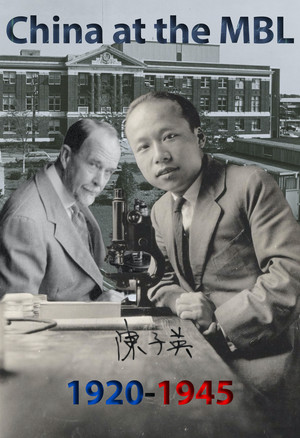From 1930 to 1933, Tang worked as an instructor at Harvard University. There, he published on the effects of oxygen gas pressure on respiration rate, and proposed the famous “Tang’s Equation.” After 1933, Tang went back to China and took a professorship in biology at Wuhan University. With only 2000 US dollars, Tang established China’s first laboratory in general physiology in Wuhan.
In 1938, Tang was appointed to Tsinghua University to establish a plant physiology laboratory there. In 1940, when the Sino-Japanese war disturbed most activities of higher education in China, Tang’s laboratory retreated to a small town in the southwest China called Dapuji (大普集). There, Tang continued to cultivate younger researchers. Modeling on the seminar set-ups he learned at Woods Hole, Tang established a monthly routine of meeting students and researchers at the local teahouse, “Peach Garden,” during which professors and students would present their research results to each other and discuss about them freely.
During the wartime, Tang also met the British biologist and historian of science Joseph Needham who visited Dapuji to help Chinese communist causes and to study Chinese sciences. Tang and Needham formed a life-long friendship. Thirty years later, in the fifth volume of his series Science and Civilization in China, Needham dedicated the book to Tang, “For my two dear comrades on the long road to apply scientific knowledge to peace and love, not to hatred or war, Tang Peisong, and Bernal.” Many valuable photographs of Tang and Needham are currently archived at the Needham Research Institute in Cambridge, UK.
After the war, Tang became the dean of the College of Agriculture at Tsinghua University. His ambition was to build a college that combined many strengths of the institutes that he had been to in the US, including the style of the Marine Biological Laboratory. In the 1950s, Tang went to the Chinese Academy of Science and established China’s first curriculum for the plant physiology major. Tang has written, as well as translated, many textbooks. He also authored a collection of essays Green Thraldom and a memoir Recollecting the Sunset to Welcome the Dawn. He is credited as an important founder of Chinese plant physiology, and a pioneer for Chinese development of cell biology, biochemistry and biophysics.

